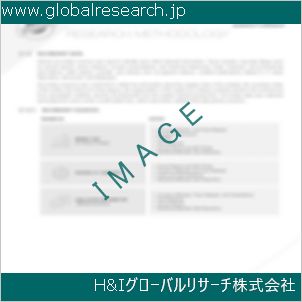1 Report Overview
1.1 Study Scope
1.2 Market Analysis by Type
1.2.1 Global Antibacterial Products Market Size Growth Rate by Type: 2018 VS 2022 VS 2029
1.2.2 Body Wash
1.2.3 Body Moisturizer
1.2.4 Hand Cream & Lotion
1.2.5 Hand Soaps
1.2.6 Facial Cleansers
1.2.7 Facial Mask
1.2.8 Other
1.3 Market by Application
1.3.1 Global Antibacterial Products Market Growth by Application: 2018 VS 2022 VS 2029
1.3.2 Hypermarkets & Supermarkets
1.3.3 Pharmacy & Drug Stores
1.3.4 Specialty Stores
1.3.5 Online
1.3.6 Other
1.4 Study Objectives
1.5 Years Considered
1.6 Years Considered
2 Global Growth Trends
2.1 Global Antibacterial Products Market Perspective (2018-2029)
2.2 Antibacterial Products Growth Trends by Region
2.2.1 Global Antibacterial Products Market Size by Region: 2018 VS 2022 VS 2029
2.2.2 Antibacterial Products Historic Market Size by Region (2018-2023)
2.2.3 Antibacterial Products Forecasted Market Size by Region (2024-2029)
2.3 Antibacterial Products Market Dynamics
2.3.1 Antibacterial Products Industry Trends
2.3.2 Antibacterial Products Market Drivers
2.3.3 Antibacterial Products Market Challenges
2.3.4 Antibacterial Products Market Restraints
3 Competition Landscape by Key Players
3.1 Global Top Antibacterial Products Players by Revenue
3.1.1 Global Top Antibacterial Products Players by Revenue (2018-2023)
3.1.2 Global Antibacterial Products Revenue Market Share by Players (2018-2023)
3.2 Global Antibacterial Products Market Share by Company Type (Tier 1, Tier 2, and Tier 3)
3.3 Players Covered: Ranking by Antibacterial Products Revenue
3.4 Global Antibacterial Products Market Concentration Ratio
3.4.1 Global Antibacterial Products Market Concentration Ratio (CR5 and HHI)
3.4.2 Global Top 10 and Top 5 Companies by Antibacterial Products Revenue in 2022
3.5 Antibacterial Products Key Players Head office and Area Served
3.6 Key Players Antibacterial Products Product Solution and Service
3.7 Date of Enter into Antibacterial Products Market
3.8 Mergers & Acquisitions, Expansion Plans
4 Antibacterial Products Breakdown Data by Type
4.1 Global Antibacterial Products Historic Market Size by Type (2018-2023)
4.2 Global Antibacterial Products Forecasted Market Size by Type (2024-2029)
5 Antibacterial Products Breakdown Data by Application
5.1 Global Antibacterial Products Historic Market Size by Application (2018-2023)
5.2 Global Antibacterial Products Forecasted Market Size by Application (2024-2029)
6 North America
6.1 North America Antibacterial Products Market Size (2018-2029)
6.2 North America Antibacterial Products Market Growth Rate by Country: 2018 VS 2022 VS 2029
6.3 North America Antibacterial Products Market Size by Country (2018-2023)
6.4 North America Antibacterial Products Market Size by Country (2024-2029)
6.5 United States
6.6 Canada
7 Europe
7.1 Europe Antibacterial Products Market Size (2018-2029)
7.2 Europe Antibacterial Products Market Growth Rate by Country: 2018 VS 2022 VS 2029
7.3 Europe Antibacterial Products Market Size by Country (2018-2023)
7.4 Europe Antibacterial Products Market Size by Country (2024-2029)
7.5 Germany
7.6 France
7.7 U.K.
7.8 Italy
7.9 Russia
7.10 Nordic Countries
8 Asia-Pacific
8.1 Asia-Pacific Antibacterial Products Market Size (2018-2029)
8.2 Asia-Pacific Antibacterial Products Market Growth Rate by Region: 2018 VS 2022 VS 2029
8.3 Asia-Pacific Antibacterial Products Market Size by Region (2018-2023)
8.4 Asia-Pacific Antibacterial Products Market Size by Region (2024-2029)
8.5 China
8.6 Japan
8.7 South Korea
8.8 Southeast Asia
8.9 India
8.10 Australia
9 Latin America
9.1 Latin America Antibacterial Products Market Size (2018-2029)
9.2 Latin America Antibacterial Products Market Growth Rate by Country: 2018 VS 2022 VS 2029
9.3 Latin America Antibacterial Products Market Size by Country (2018-2023)
9.4 Latin America Antibacterial Products Market Size by Country (2024-2029)
9.5 Mexico
9.6 Brazil
10 Middle East & Africa
10.1 Middle East & Africa Antibacterial Products Market Size (2018-2029)
10.2 Middle East & Africa Antibacterial Products Market Growth Rate by Country: 2018 VS 2022 VS 2029
10.3 Middle East & Africa Antibacterial Products Market Size by Country (2018-2023)
10.4 Middle East & Africa Antibacterial Products Market Size by Country (2024-2029)
10.5 Turkey
10.6 Saudi Arabia
10.7 UAE
11 Key Players Profiles
11.1 Reckitt Benckiser Group PLC
11.1.1 Reckitt Benckiser Group PLC Company Detail
11.1.2 Reckitt Benckiser Group PLC Business Overview
11.1.3 Reckitt Benckiser Group PLC Antibacterial Products Introduction
11.1.4 Reckitt Benckiser Group PLC Revenue in Antibacterial Products Business (2018-2023)
11.1.5 Reckitt Benckiser Group PLC Recent Development
11.2 Unilever
11.2.1 Unilever Company Detail
11.2.2 Unilever Business Overview
11.2.3 Unilever Antibacterial Products Introduction
11.2.4 Unilever Revenue in Antibacterial Products Business (2018-2023)
11.2.5 Unilever Recent Development
11.3 GOJO Industries, Inc.
11.3.1 GOJO Industries, Inc. Company Detail
11.3.2 GOJO Industries, Inc. Business Overview
11.3.3 GOJO Industries, Inc. Antibacterial Products Introduction
11.3.4 GOJO Industries, Inc. Revenue in Antibacterial Products Business (2018-2023)
11.3.5 GOJO Industries, Inc. Recent Development
11.4 The Himalaya Drug Company
11.4.1 The Himalaya Drug Company Company Detail
11.4.2 The Himalaya Drug Company Business Overview
11.4.3 The Himalaya Drug Company Antibacterial Products Introduction
11.4.4 The Himalaya Drug Company Revenue in Antibacterial Products Business (2018-2023)
11.4.5 The Himalaya Drug Company Recent Development
11.5 Sebapharma GmbH & Co. KG
11.5.1 Sebapharma GmbH & Co. KG Company Detail
11.5.2 Sebapharma GmbH & Co. KG Business Overview
11.5.3 Sebapharma GmbH & Co. KG Antibacterial Products Introduction
11.5.4 Sebapharma GmbH & Co. KG Revenue in Antibacterial Products Business (2018-2023)
11.5.5 Sebapharma GmbH & Co. KG Recent Development
11.6 Bielenda
11.6.1 Bielenda Company Detail
11.6.2 Bielenda Business Overview
11.6.3 Bielenda Antibacterial Products Introduction
11.6.4 Bielenda Revenue in Antibacterial Products Business (2018-2023)
11.6.5 Bielenda Recent Development
11.7 Colgate-Palmolive Company
11.7.1 Colgate-Palmolive Company Company Detail
11.7.2 Colgate-Palmolive Company Business Overview
11.7.3 Colgate-Palmolive Company Antibacterial Products Introduction
11.7.4 Colgate-Palmolive Company Revenue in Antibacterial Products Business (2018-2023)
11.7.5 Colgate-Palmolive Company Recent Development
11.8 Henkel Corporation
11.8.1 Henkel Corporation Company Detail
11.8.2 Henkel Corporation Business Overview
11.8.3 Henkel Corporation Antibacterial Products Introduction
11.8.4 Henkel Corporation Revenue in Antibacterial Products Business (2018-2023)
11.8.5 Henkel Corporation Recent Development
11.9 Johnson & Johnson
11.9.1 Johnson & Johnson Company Detail
11.9.2 Johnson & Johnson Business Overview
11.9.3 Johnson & Johnson Antibacterial Products Introduction
11.9.4 Johnson & Johnson Revenue in Antibacterial Products Business (2018-2023)
11.9.5 Johnson & Johnson Recent Development
11.10 Farouk Systems, Inc.
11.10.1 Farouk Systems, Inc. Company Detail
11.10.2 Farouk Systems, Inc. Business Overview
11.10.3 Farouk Systems, Inc. Antibacterial Products Introduction
11.10.4 Farouk Systems, Inc. Revenue in Antibacterial Products Business (2018-2023)
11.10.5 Farouk Systems, Inc. Recent Development
12 Analyst’s Viewpoints/Conclusions
13 Appendix
13.1 Research Methodology
13.1.1 Methodology/Research Approach
13.1.2 Data Source
13.2 Disclaimer
13.3 Author Details
| ※参考情報 抗菌製品とは、微生物の生育を抑制し、感染症や不快な臭いの原因となるバイ菌の繁殖を防ぐために設計された製品を指します。これらの製品は、家庭や医療、産業など多岐にわたる分野で利用されており、私たちの日常生活において欠かせない存在となっています。 抗菌製品の定義は、一般的には特定の抗菌活性を持つ成分を含む物品とされており、これにより細菌やウイルス、真菌などの微生物の増殖を抑制します。抗菌作用は、主に抗菌剤や抗菌物質によって実現され、これらの成分は製品の素材に添加されたり、表面にコーティングされたりする形で利用されます。抗菌製品の特徴としては、持続的な効果、使用の簡便さ、安全性、そして経済性などが挙げられます。 抗菌製品の種類は多岐にわたります。一般的には、抗菌コーティングされた表面材、抗菌加工された繊維、抗菌性のある洗剤や消毒剤、さらには抗菌機能を持つ医療器具などが含まれます。例えば、抗菌コーティングされたキッチン用品や家庭用の清掃用具は、食材に付着しやすいバイ菌を抑える役割を果たし、衛生的な環境を維持するために重要です。また、抗菌性のある繊維は、衣類や寝具などに使用され、かゆみやアレルギー反応を引き起こす原因となるバイ菌の繁殖を防ぎます。 用途については、抗菌製品は家庭内の掃除や洗濯、さらには公共の場での衛生管理にまで広がっています。特に医療現場では、手術用具や病院内の表面消毒に抗菌製品が用いられ、感染症の拡大を防ぐための重要な手段となっています。また、食品産業においても、抗菌性のある包装材が利用され、食品の腐敗を遅らせることに寄与しています。さらに、抗菌製品は個人の衛生管理にも使用されており、手指消毒剤や除菌シートなどが日常的に利用されています。 抗菌技術の関連技術には、さまざまなものがあります。抗菌剤としては、銀イオン、銅、亜鉛、抗菌ポリマーなどが挙げられ、これらの成分は微生物の細胞壁を破壊したり、代謝を阻害したりすることで、抗菌効果を発揮します。例えば、銀イオンは非常に強力な抗菌作用を持ち、多くの医療器具や消毒剤に使用されているほか、日常品にも広く利用されています。また、ナノテクノロジーを活用した抗菌製品も増えており、ナノ粒子を使用することで、従来の抗菌剤よりも効率的かつ持続的な抗菌効果を発揮することが可能となっています。 さらに、近年では自然由来の抗菌成分の利用も注目されています。例えば、茶カテキンやシトラス抽出物、ウコン、ニンニクなど、天然素材の抗菌特性が研究され、健康への影響を考慮しながら設計された製品が増加しています。これにより、使用者の安全性を確保しながらも、効果的な抗菌性能を持つ製品が誕生しています。 一方で、抗菌製品に対する懸念も存在します。過剰な抗菌処理が行われることにより、耐性菌の発生が懸念されており、適切な使用方法や管理が求められています。耐性菌は、抗菌剤に対する耐性を獲得した細菌であり、これにより一般的な治療が困難になるという問題が生じています。このため、抗菌製品の使用は必要な場面に限り、過信せずに利用することが推奨されます。 また、抗菌製品の購入時には、製品の表示をしっかりと確認することが重要です。「抗菌」や「除菌」といった言葉が使われていますが、その具体的な効果や持続時間、使用方法などは製品によって異なります。消費者が正しい情報を持つことで、適切な選択ができるようにすることが求められています。 抗菌製品の市場は年々拡大しており、特に新型コロナウイルスの影響を受け、多くの人々が衛生管理に対する意識を高めています。このような背景の中で、効果的な抗菌製品の開発は今後も進められるでしょう。新しい技術の導入や研究が進むことで、より安全で環境にも優しい抗菌製品が求められる時代が到来しています。 総じて、抗菌製品は私たちの生活をより安全で快適に保つための重要な役割を果たしています。しかし、その使用にあたっては、適切な取り扱いや知識を持つことが重要であり、無駄な過剰対策とならないように留意する必要があります。そして、今後ますます多様化する抗菌製品に対して、私たち消費者は自ら調査し、自分たちの健康を守るための選択をしていくことが求められるでしょう。 |
❖ 免責事項 ❖
http://www.globalresearch.jp/disclaimer












